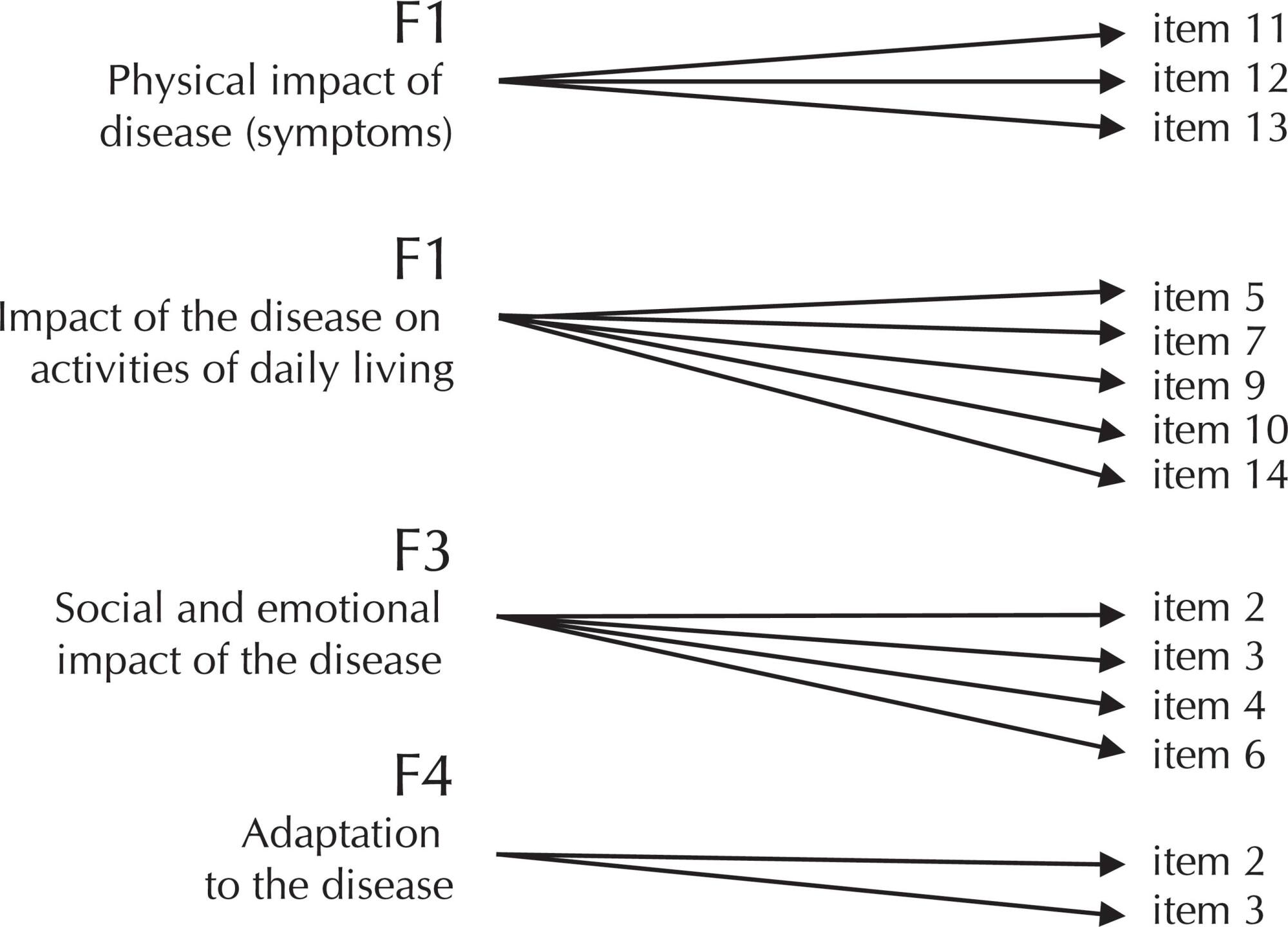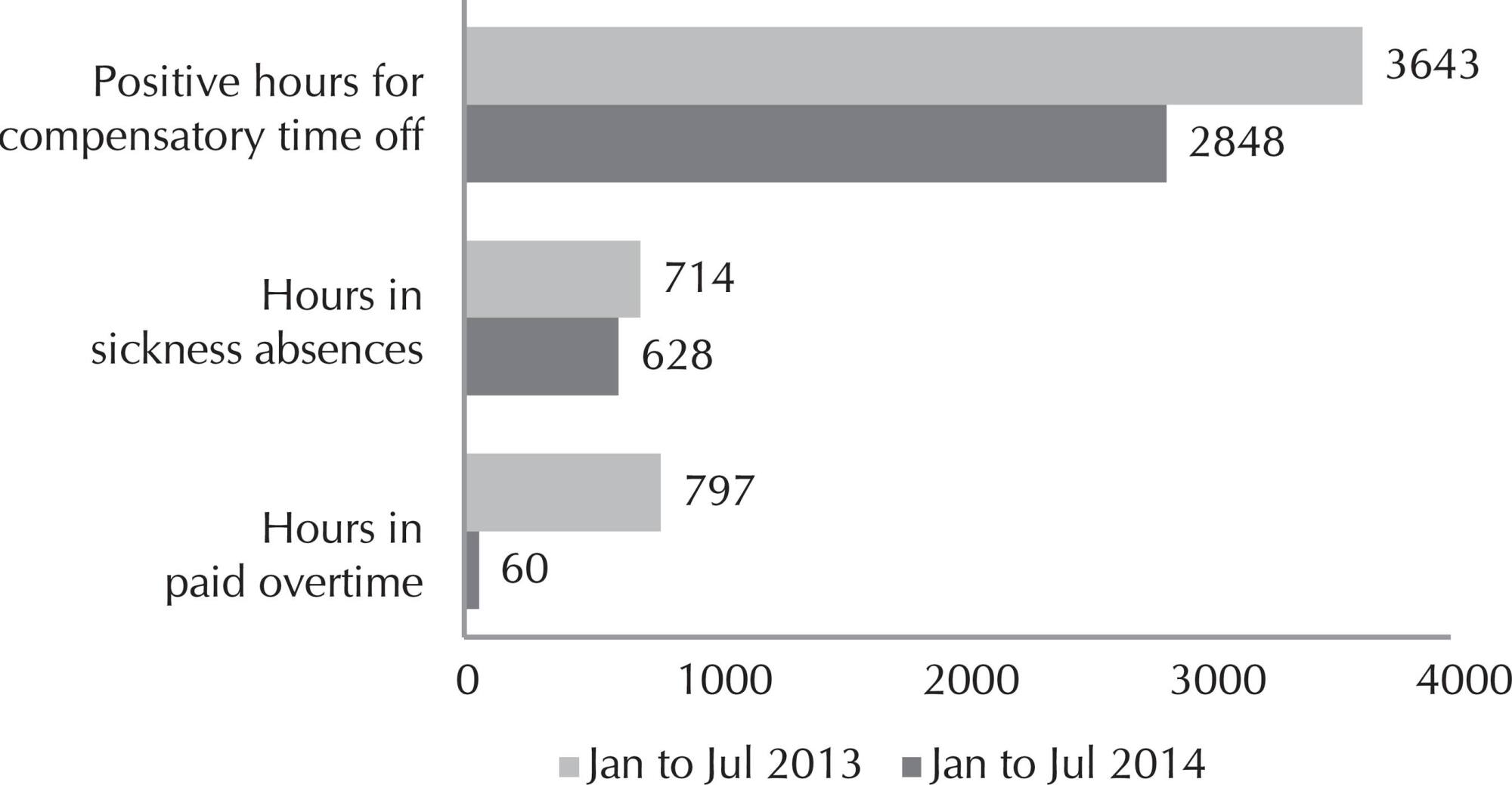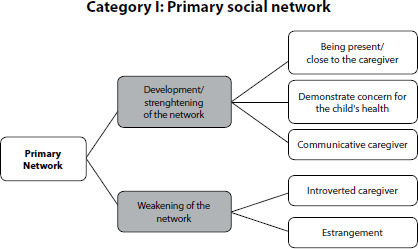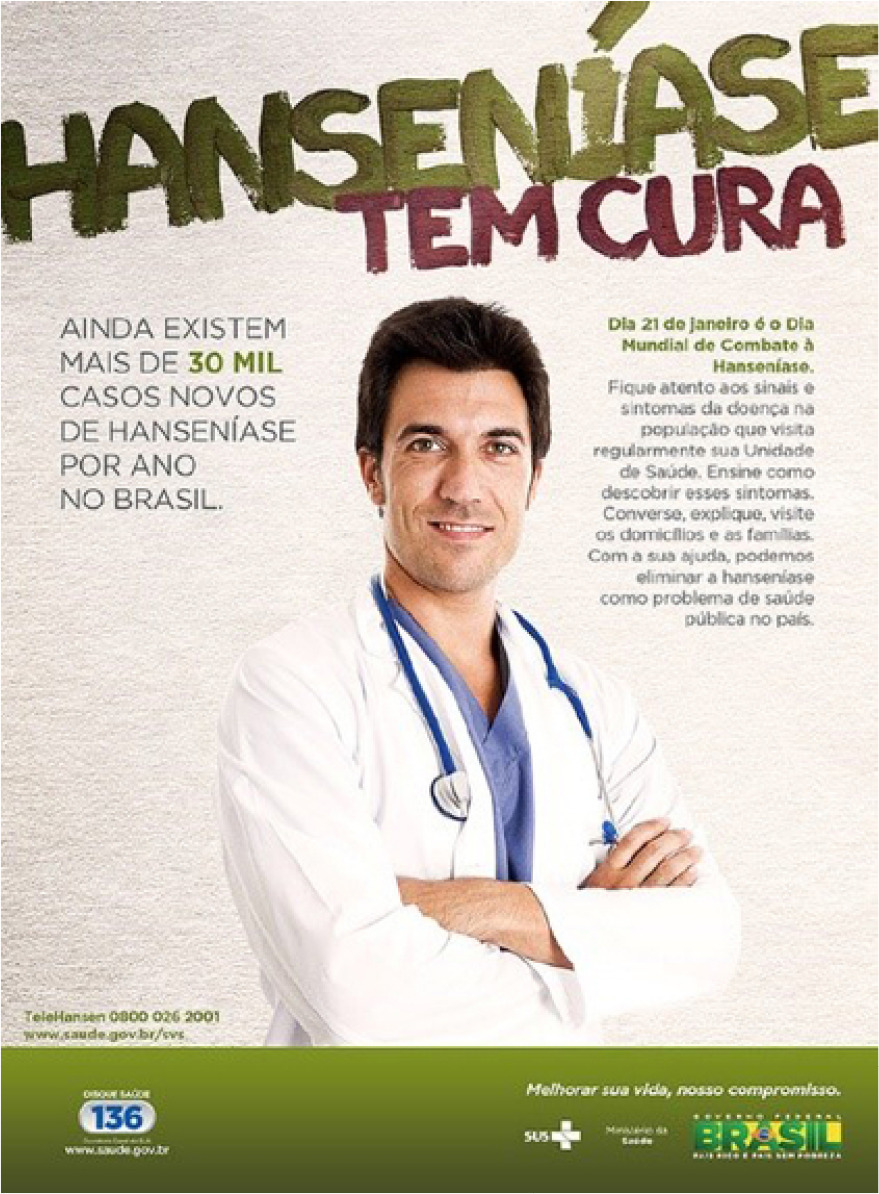-
01-01-2016
Prevention and monitoring of delirium in older adults: an educational intervention
Revista Brasileira de Enfermagem. 2016;69(4):725-732
Abstract
Prevention and monitoring of delirium in older adults: an educational intervention
Revista Brasileira de Enfermagem. 2016;69(4):725-732
DOI 10.1590/0034-7167.2016690416i
Views0See moreABSTRACT
Objective:
to conduct an educational intervention with the nursing team members of an intensive care unit (ICU), aiming to increase knowledge and to introduce improvements in their practices regarding prevention and monitoring of delirium in older patients.
Method:
this is an action research, in which workshops were conducted with eleven nurses and a nursing technician from an ICU unit in Salvador, Bahia, Brazil.
Results:
ten problems regarding nursing practices for prevention and monitoring of delirium were identified. Educational, practical, technical, and managerial actions were planned, involving cross-sector connections for planning ways to solve these problems. The groups reported significant changes in the practices, with the implementation of drug-free measures for preventing and managing the situation.
Conclusion:
the educational intervention contributed to improve the nursing practices in the ICU unit studied, and it also favored the development of critical thinking about the problems mentioned, thus enabling permanent review of offered treatments.
-
01-01-2016
Technology-dependent children and the demand for pharmaceutical care
Revista Brasileira de Enfermagem. 2016;69(4):718-724
Abstract
Technology-dependent children and the demand for pharmaceutical care
Revista Brasileira de Enfermagem. 2016;69(4):718-724
DOI 10.1590/0034-7167.2016690415i
Views0See moreABSTRACT
Objective:
to understand the experience of mothers of technology-dependent children as regards pharmaceutical care.
Method:
this was a qualitative, descriptive-exploratory study developed based on open interviews using a structured characterization tool, and applied during home visits to 12 mothers caring for technology-dependent children. The data was submitted to inductive content analysis.
Results:
this study is split into two themes: (i) maternal overload during pharmaceutical care, demonstrating the need to administer drugs continuously and the repercussions of this exhaustive care on the caregivers; (ii) the ease or difficulty of access to the medicines required, showing informal strategies and support networks.
Conclusion:
pharmaceutical care is a daily challenge expressed in maternal overload and difficulty accessing the drugs, made worse by failures in the care network and coordinated care.
-
01-01-2016
Fasting of less than eight hours in urgent and emergency surgeries versus complication
Revista Brasileira de Enfermagem. 2016;69(4):712-717
Abstract
Fasting of less than eight hours in urgent and emergency surgeries versus complication
Revista Brasileira de Enfermagem. 2016;69(4):712-717
DOI 10.1590/0034-7167.2016690414i
Views0See moreABSTRACT
Objective:
to verify the occurrence of intraoperative and postoperative complications in patients undergoing urgent and emergency surgical procedures between January and December 2012, with fasting time of less than 8 hours.
Method:
a quantitative study was conducted, of the retrospective cohort type, through the analysis of medical records.
Results:
we included 181 records of patients undergoing surgical procedures with average duration of 59.4 minutes. Fractures correction surgeries stood out, totalling 32% of cases. We observed complications in 36 patients (19.9%), vomiting being the most prevalent (47.2%); followed by nausea (16.7%); need for blood transfusion (13.9%); surgical site infection (11.1%); and death (11.1%). The average fasting time was 133.5 minutes. The fasting time showed no statistically significant correlation with the complications investigated.
Conclusion:
intraoperative and postoperative complications were associated with the clinical conditions of the patients and not with the fasting time.
-
01-01-2016
Validation to Portuguese of the Debriefing Experience Scale
Revista Brasileira de Enfermagem. 2016;69(4):705-711
Abstract
Validation to Portuguese of the Debriefing Experience Scale
Revista Brasileira de Enfermagem. 2016;69(4):705-711
DOI 10.1590/0034-7167.2016690413i
Views1See moreABSTRACT
Objective:
to translate and validate to Portuguese the Debriefing Experience Scale jointly with individuals that used high-fidelity simulation in learning.
Method:
methodological and exploratory study for an instrument translation and validation. For the validation process, the event “III Workshop Brazil – Portugal: Care Delivery to Critical Patients” was created.
Results:
103 nurses attended. Validity and reliability of the scale, the correlation pattern among variables, the sampling adequacy test, and the sphericity test showed good results. Since there was no relationship among the groups established in the exploratory factor analysis, the option was to follow the division established by the original version.
Conclusion:
the version of the instrument was called Escala de Experiência com o Debriefing. The results showed good psychometric properties and a good potential for use. However, further studies will contribute to consolidate the validity of the scale and strengthen its potential use.
-
01-01-2016
Factor analysis of an instrument to measure the impact of disease on daily life
Revista Brasileira de Enfermagem. 2016;69(4):697-704
Abstract
Factor analysis of an instrument to measure the impact of disease on daily life
Revista Brasileira de Enfermagem. 2016;69(4):697-704
DOI 10.1590/0034-7167.2016690412i
Views0See moreABSTRACT
Objective:
to verify the structure of factors of an instrument to measure the Heart Valve Disease Impact on Daily Life (IDCV) when applied to coronary artery disease patients.
Method:
the study included 153 coronary artery disease patients undergoing outpatient follow-up care. The IDCV structure of factors was initially assessed by means of confirmatory factor analysis and, subsequently, by exploratory factor analysis. The Varimax rotation method was used to estimate the main components of analysis, eigenvalues greater than one for extraction of factors, and factor loading greater than 0.40 for selection of items. Internal consistency was estimated using Cronbach’s alpha coefficient. Results: confirmatory factor analysis did not confirm the original structure of factors of the IDCV. Exploratory factor analysis showed three dimensions, which together explained 78% of the measurement variance.
Conclusion:
future studies with expansion of case selection are necessary to confirm the IDCV new structure of factors.

-
01-01-2016
Association of frailty in hospitalized and institutionalized elderly in the community-dwelling
Revista Brasileira de Enfermagem. 2016;69(4):691-696
Abstract
Association of frailty in hospitalized and institutionalized elderly in the community-dwelling
Revista Brasileira de Enfermagem. 2016;69(4):691-696
DOI 10.1590/0034-7167.2016690411i
Views0See moreABSTRACT
Objective:
to investigate the association between frailty with hospitalization and institutionalization in a follow-up study of elderly residents.
Method:
the follow-up study was performed in 2008 and 2013 with elderly of both genders, aged 65 years and older who were living in the community-dwelling. The sampling procedure performed was probabilistic, with dual-stage clustering. In 2008, 515 elderly people were interviewed and, in 2013, 262. We used the socioeconomic and demographic data, self-reported morbidity, specific data of hospitalization and institutionalization. Frailty was measured by the Edmonton Frail Scale (EFS), and functional capacity through the Functional Independence Measure.
Results:
we found the mean gross EFS score was higher among resident elderly who were hospitalized and institutionalized and was statistically significant in both investigated years.
Conclusion:
the confirmation of association between frailty and hospitalization and institutionalization reinforces the importance of the subject, and highlights frailty as an important tool for risk estimates for these adverse events.
-
01-01-2016
Associação da fragilidade em idosos internados e institucionalizados na comunidade
Revista Brasileira de Enfermagem. 2016;69(4):691-696
Abstract
Associação da fragilidade em idosos internados e institucionalizados na comunidade
Revista Brasileira de Enfermagem. 2016;69(4):691-696
DOI 10.1590/0034-7167.2016690411i
Views0See moreRESUMEN
Objetivo:
investigar la asociación entre la fragilidad y la internación e institucionalización, en un estudio de acompañamiento de residentes ancianos.
Método:
el estudio de acompañamiento fue realizado en 2008 y 2013, con ancianos de ambos sexos, de 65 años o más, los cuales vivían en la comunidad. El procedimiento de muestreo realizado fue probabilístico, con agrupamiento en dos etapas. Fueron entrevistados 512 ancianos en 2008 y 262 en 2013. Datos socioeconómicos y demográficos, morbilidad relatada por los mismos y datos específicos de internación e institucionalización han sido utilizados. La fragilidad fue medida por la escala Edmond Frail Scale (EFS) y la capacidad funcional por la escala Functional Independence Measure (FIM).
Resultados:
El promedio de la puntuación EFS fue mayor entre los residentes ancianos que fueron internados y hospitalizados, siendo estadísticamente significativa en los dos años investigados.
Conclusión:
La confirmación de la asociación entre la fragilidad y la internación e institucionalización refuerza la importancia del tema y enfatiza la fragilidad como un instrumento importante en la evaluación de los riesgos para estos eventos adversos.
-
01-01-2016
Analysis of managerial and healthcare indicators after nursing personnel upsizing
Revista Brasileira de Enfermagem. 2016;69(4):684-690
Abstract
Analysis of managerial and healthcare indicators after nursing personnel upsizing
Revista Brasileira de Enfermagem. 2016;69(4):684-690
DOI 10.1590/0034-7167.2016690410i
Views0See moreABSTRACT
Objective:
analyze healthcare and managerial indicators after nursing personnel upsizing.
Method:
a retrospective, descriptive study was conducted using data from computer systems of a university hospital in southern Brazil. Healthcare and managerial indicators related to the first half of 2013 and 2014 were statistically analyzed.
Results:
increases of 40.0% in the number of nurses and 16.0% in the number of nursing technicians led to reductions of 12.0% in the number of sickness absences, 21.8% in positive balance for compensatory time off, 92.0% in paid overtime. Reductions of 75.0% in pressure ulcer rates, 10.5% in the number of falls and 50.0% in infections due to indwelling catheter use were also observed.
Conclusion:
nursing staff upsizing caused a positive impact on managerial and healthcare indicators and helped qualify care and improve work conditions for the nursing team.

-
ORIGINAL ARTICLE09-29-2022
Neither angels nor heroes: nurse speeches during the COVID-19 pandemic from a Foucauldian perspective
Revista Brasileira de Enfermagem. 2022;75:e20201329
Abstract
ORIGINAL ARTICLENeither angels nor heroes: nurse speeches during the COVID-19 pandemic from a Foucauldian perspective
Revista Brasileira de Enfermagem. 2022;75:e20201329
DOI 10.1590/0034-7167-2020-1329
Views1See moreABSTRACT
Objective:
to analyze the processes of meaning production, based on the speeches of nursing professionals, about how they feel about the titles of “angels and heroes” given by society during the pandemic of COVID-19.
Methods:
a qualitative, documentary research. Data was collected in October and November 2020 and analyzed from the perspective of the Discourse Analysis proposed by Michel Foucault.
Results:
they were organized into two thematic categories: “Angels and heroes? The (not) heroic reality of nursing during the pandemic” and “The search for recognition of the professional work of nursing: between what is said and what is not said”.
Final considerations:
the nurses’ speeches enunciate the search for decent conditions for the execution of care, fair wages, and recognition of the professional work by society.
-
REVIEW10-18-2022
Decision making by health professionals during COVID-19: an integrative review
Revista Brasileira de Enfermagem. 2022;75:e20210067
Abstract
REVIEWDecision making by health professionals during COVID-19: an integrative review
Revista Brasileira de Enfermagem. 2022;75:e20210067
DOI 10.1590/0034-7167-2021-0067
Views1See moreABSTRACT
Objective:
To analyze the scientific production on the decision making of health workers during the COVID-19 pandemic.
Methods:
Integrative review in the databases CINAHL, MEDLINE, Scopus, ScienceDirect, WoS, and BVS. Inclusion criteria: original articles available in full, in any language, related to the object investigated.
Results:
During this pandemic, health workers have been making decisions based on ethical/bioethical principles (utility, beneficence, non-maleficence, autonomy, justice, proportionality, flexibility, clinical prognosis, duration of the need, and fair health attention), values (solidarity, equality, equity, utilitarianism, relational autonomy, reliability, reciprocity, maximization of the benefits and resources, and prioritization of those in worse conditions), beliefs and personal motivation, protocols, directives, tools, algorithms, recommendations, and criteria.
Final considerations:
Decision making has never been so necessary as in this pandemic. This article is not a recipe for the professionals, since decision making is based on numerous factors. However, it provides them with a foundation that can be helpful in this difficult process.

-
ORIGINAL ARTICLE07-18-2022
Child and adolescent victims of sexual violence: aspects of physical and emotional development
Revista Brasileira de Enfermagem. 2022;75:e20200584
Abstract
ORIGINAL ARTICLEChild and adolescent victims of sexual violence: aspects of physical and emotional development
Revista Brasileira de Enfermagem. 2022;75:e20200584
DOI 10.1590/0034-7167-2020-0584
Views0See moreABSTRACT
Objective:
to identify the multidisciplinary health team’s perception on aspects of the physical and emotional development of children and adolescents who have suffered sexual violence.
Methods:
a qualitative study, carried out with 30 health professionals in a hospital in Bahia, Brazil, between June and July 2019. Data were collected from an interview guided by a semi-structured questionnaire. The results were interpreted according to Symbolic Interactionism.
Results:
some sexually violated children were under five years old and healthy, others had physical/mental disabilities. Victimized adolescents were in the pre-pubertal phase, with fragile body structure, not emotionally mature and unaware of sexuality.
Final considerations:
children’s physical and emotional aspects make children vulnerable to sexual victimization, as they facilitate the control and dominion that offenders need to have over them. As a protection strategy, it is recommended using sexual and health education linked to greater surveillance of family members, multidisciplinary team and educators.
-
ORIGINAL ARTICLE11-10-2022
Home care for children with gastrostomy
Revista Brasileira de Enfermagem. 2022;75:e20200699
Abstract
ORIGINAL ARTICLEHome care for children with gastrostomy
Revista Brasileira de Enfermagem. 2022;75:e20200699
DOI 10.1590/0034-7167-2020-0699
Views0See moreABSTRACT
Objectives:
to describe home care practices performed by family members for maintaining the life of children with gastrostomy.
Methods:
qualitative research using the Sensitive Creative method, with the Criatividade e Sensibilidade Corpo Saber [Corpo Saber Creativity and Sensitivity] dynamics. The participation included ten family caregivers of children with gastrostomy. The outpatient clinic of a federal hospital in Rio de Janeiro was the setting. Lexical analysis was used through the IRaMuTeQ® software.
Results:
Theme 1, entitled “The care for maintaining life performed by family members of children with gastrostomy at home”, was analyzed, comprising three classes: “The gastrostomy tube home care routine”; “The care with the gastrostomy/stoma”; and “Food and medication home care routine of children with gastrostomy”.
Final Considerations:
family caregivers used strategies to maintain the device and acquired new knowledge in this field, and in nursing competence, regarding stoma care, food administration, medication, and syringes.

-
ORIGINAL ARTICLE01-14-2022
Hospital structure elements demarcating (in)visibilities of institutional violence against children
Revista Brasileira de Enfermagem. 2022;75:e20200785
Abstract
ORIGINAL ARTICLEHospital structure elements demarcating (in)visibilities of institutional violence against children
Revista Brasileira de Enfermagem. 2022;75:e20200785
DOI 10.1590/0034-7167-2020-0785
Views0See moreABSTRACT
Objectives:
to analyze the hospital structure elements that demarcate (in)visibilities of institutional violence in hospitalized children.
Methods:
this is a descriptive-exploratory qualitative study that used approaches with Foucault’s thinking. Ten companions and 39 healthcare professionals from a university hospital in Salvador, Bahia participated. Data collection took place from November 2018 to June 2019 through semi-structured interviews. The discourse analysis method was used. The study was approved by the Institutional Review Board.
Results:
institutional violence was understood in the violations and invisibilities of the structure of health services through the problems: in infrastructure (physical structure, lack of human and material resources, scrapping of equipment); administrative and management; pilgrimage.
Final Considerations:
it is necessary to realize the invisibilities of the infrastructure to act in confronting institutional violence to hospitalized children.
-
ORIGINAL ARTICLE03-07-2022
The family of the child with special health care needs and their social relationships
Revista Brasileira de Enfermagem. 2022;75:e20210031
Abstract
ORIGINAL ARTICLEThe family of the child with special health care needs and their social relationships
Revista Brasileira de Enfermagem. 2022;75:e20210031
DOI 10.1590/0034-7167-2021-0031
Views0See moreABSTRACT
Objectives:
to identify aspects that can influence the types of bonds developed in the social support network of family members of children with special health care needs.
Methods:
qualitative research conducted through interviews with 15 family members/guardians in the city of Rio de Janeiro, from January to February 2020. Sanicola’s theoretical-methodological framework and Bardin’s thematic analysis technique were used.
Results:
social distancing, lack of responsibility for coordinating care, lack of supplies and lack of individualized care were weaknesses found in the families’ social relationships. However, the bonds were strengthened by the relationship of familiarity and availability of professionals in the care of children with special health needs.
Final Considerations:
understanding the configuration of primary and secondary social networks and the types of support offered can improve the care of children and strengthen bonds that provide security for families.

-
ORIGINAL ARTICLE07-18-2022
Prevalence of non-communicable chronic diseases and associated factors in deaf people
Revista Brasileira de Enfermagem. 2022;75:e20210205
Abstract
ORIGINAL ARTICLEPrevalence of non-communicable chronic diseases and associated factors in deaf people
Revista Brasileira de Enfermagem. 2022;75:e20210205
DOI 10.1590/0034-7167-2021-0205
Views0See moreABSTRACT
Objective:
To analyze the prevalence and factors associated with non-communicable chronic diseases in deaf people.
Methods:
Cross-sectional study with 110 deaf people in Maringá-Paraná, selected using the snowball sampling technique. Data were collected from February to August 2019, using a structured instrument; and, in the analysis, multiple logistic regression was used.
Results:
The self-reported prevalence of chronic diseases was 43.6%, the most frequent being: arterial hypertension (12.7%), depression (6.4%), diabetes mellitus (5.4%), respiratory disease (5.4%) and hypothyroidism (4.5%). Using health services for routine consultations was significantly associated with being bimodal bilingual. The only risk behavior significantly associated with chronic disease was excessive consumption of sweet foods.
Conclusion:
The prevalence of chronic diseases in this population may be higher than that found, as there is a possibility of underdiagnosis due to the low demand for routine consultations and the difficulty of communication with health professionals.
-
ORIGINAL ARTICLE06-03-2022
Sociodiscursive representations about leprosy in educational campaigns: implications on stigma reduction
Revista Brasileira de Enfermagem. 2022;75:e20210410
Abstract
ORIGINAL ARTICLESociodiscursive representations about leprosy in educational campaigns: implications on stigma reduction
Revista Brasileira de Enfermagem. 2022;75:e20210410
DOI 10.1590/0034-7167-2021-0410
Views0See moreABSTRACT
Objectives:
to analyze the socio-discursive representations about leprosy produced in posters of educational campaigns of the Brazilian Ministry of Health.
Methods:
a documentary and discursive research about posters of campaigns about leprosy produced by the Brazilian Ministry of Health and available on Google Search Images. For the analysis, we used the Critical Discourse Analysis approach and the Grammar of Visual Design.
Results:
the socio-discursive representations of leprosy are based on the biomedical ideology, through a normative-curative discourse that focuses on the dermatological manifestations of the disease. Regarding the construction of the compositional space, there are posters that emphasize the meaning that the disease does not prevent affectionate relationships, and others highlight as “new” the clinical manifestations of the disease.
Final Considerations:
the normative-curative discourse produced in the campaigns is not enough to face stigma related to the disease. For leprosy to be understood as a common chronic disease, it is first necessary to fight the “social leprosy”: the stigma.

Search
Search in:
Nuvem de Tags
Adolescente (85) Atenção Primária à Saúde (239) COVID-19 (91) Criança (91) Cuidados de Enfermagem (269) Educação em Enfermagem (151) Educação em Saúde (139) Enfermagem (930) Enfermagem Pediátrica (86) Estudantes de Enfermagem (77) Estudos de Validação (131) Família (87) Idoso (208) Promoção da Saúde (99) Qualidade de Vida (104) Saúde do Trabalhador (86) Saúde Mental (145) Saúde Pública (82) Segurança do Paciente (150) Tecnologia Educacional (100)



